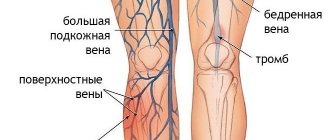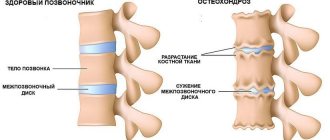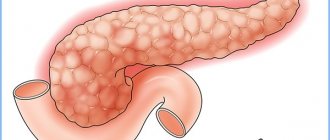Fetal hypoxia is a diagnosis that frightens many mothers during pregnancy. How to determine it and whether it is possible to fight this condition - read in this article.
- The fetus in the womb receives all vital nutrients , in particular oxygen, through the placenta from the mother's body
- And although his lungs begin to form at an early stage of development, in the third trimester they become ready for independent breathing, yet the child cannot breathe while in the womb
- Unfortunately, sometimes it happens that this only source of air and life, for various reasons, begins to supply the baby insufficiently, as a result of which fetal hypoxia
What does fetal hypoxia mean?
Fetal hypoxia is oxygen starvation of the baby in the womb, which occurs against the background of insufficient oxygen supply through the placenta or due to its incomplete absorption by the child’s body. This can happen for various reasons and lead to various consequences.
With hypoxia, the baby does not receive enough oxygen in the womb
According to statistics, more than 10% of births are accompanied by fetal hypoxia of varying degrees.
This dangerous condition leads to changes in the baby's metabolism . At the initial stage of hypoxia, the child’s body tries to compensate for the lack of oxygen and speeds up the work of all organs and systems, but at the stage of prolonged, chronic hypoxia , this mechanism ceases to function and the consequences for the baby can be the most disastrous.
A woman may not even suspect that the child is susceptible to oxygen starvation
Why do adults lack oxygen?
Brain hypoxia appears against the background of two main groups of causes. External reasons are due to the fact that the percentage of oxygen in the air decreases. This condition is caused by explosive decompression (a sharp drop in pressure). It also happens when you are in mines or under water.
Internal causes include diseases of the blood, cardiovascular, respiratory and central nervous systems. In adults, symptoms of cerebral hypoxia can develop due to poisoning with heavy metals or carbon monoxide.
In order to prevent pathology in adulthood, it is necessary to know how fetal hypoxia manifests itself. It can act as the initial cause of health problems in adulthood.
What is the danger of fetal hypoxia for a child in the future?
Hypoxia in newborns can disappear without a trace, without creating changes in the functioning of various organs and systems. In many ways, the severity of the consequences depends on the type and duration of its persistence.
For a child, the consequences of hypoxia during childbirth can cause disability.
The consequences of acute fetal hypoxia during labor, which persists even for a short time, can cause irreversible changes. Among them, the most dangerous is the death of brain cells located in vital structures. As a result, cerebral hypoxia that develops in newborns leads to:
- visual impairment,
- failure of spontaneous breathing,
- limited motor functions,
- inability to learn.
The chronic course is the least dangerous. The child may experience a disruption in the full development of organs and tissues, which will manifest itself as a delay in development, which can be gradually compensated for in the future.
Signs of fetal hypoxia during pregnancy
In the early lines, it is extremely difficult to assume fetal hypoxia. This can only be evidenced by the presence of certain diseases in the mother , which a priori pose a threat to the oxygen supply to the fetus. Such diseases include:
- anemia (low hemoglobin content in the blood of a pregnant woman)
- lung diseases (asthma, bronchitis)
- diabetes
- cardiovascular diseases
- some kidney diseases
- intoxication
- oncology
- alcoholism and drug addiction
Smoking is one of the factors that provoke fetal hypoxia.
It is possible to assume that perhaps the baby in the womb is exposed to oxygen starvation using ultrasound . If the child’s parameters do not correspond to the deadline, namely, they are less than normal, then this indicates a lack of nutrients or oxygen .
Also, a Doppler study during hypoxia will show a rapid heartbeat or, conversely, a slow heartbeat.
Doppler measurements can reveal circulatory disorders in the arteries and placenta, which clearly leads to fetal hypoxia.
Ultrasound with Doppler
In the second half of pregnancy, when the baby in the womb pleases the mother with movements , the pregnant woman herself can establish hypoxia.
If the baby is too active or his movements occur less frequently than usual, then the woman should consult a gynecologist, because changes in the rhythm of the baby’s movements are one of the most obvious signs of hypoxia.
Causes
There are many factors that provoke a lack of oxygen for the baby.
Among them:
- diseases of the respiratory system suffered by a woman during pregnancy;
- chronic disorders of the cardiovascular system;
- abnormal development of the baby, infection or incompatibility of Rh blood with the mother;
- pathologies of the umbilical cord, its loss, compression, tying in a knot;
- complications resulting from toxicosis;
- excess volume of amniotic fluid;
- development of 2 or more fruits at once;
- pregnancy lasting more than 42 weeks;
- frequent depression and stress of the expectant mother;
- prolonged labor;
- incorrectly selected anesthesia during childbirth.
What causes fetal hypoxia during pregnancy?
As mentioned above, insufficient oxygen supply from mother to child can be caused by various diseases of the woman.
But this is not the only factor causing hypoxia. It has been scientifically established that smoking by a woman who is carrying a child can provoke a lack of placental nutrition, which means that the child in this case will receive less oxygen.
Smoking during pregnancy is a path to childhood disability
Rare exposure to fresh air also has a negative impact on the condition of the woman and child . If a woman stays in a stuffy room for a long time, this can also lead to fetal hypoxia.
a pregnant woman should spend as much time as possible outdoors
But not only changes in the mother’s body can provoke a change in the volume of oxygen that reaches the child. The following causes of fetal hypoxia are also identified , associated with changes in the child’s body and the characteristics of pregnancy:
- placental lamination
- gestosis
- congenital malformations of the fetus
- post-term pregnancy
- infection
- anemia in a child
- umbilical cord entanglement
Hypoxia of the child during childbirth
Acute hypoxia can also occur during childbirth if the labor of the woman in labor is weak and the child remains in the birth canal for a long time.
How is hypoxia treated?
Depending on the degree and causes of hypoxia, treatment can be carried out both in a hospital and on an outpatient basis. Measures are being taken to improve blood circulation in the placenta, reduce the tone of the uterus, and enhance metabolic processes.
The expectant mother needs to make adjustments to her lifestyle:
- reduce emotional stress and physical stress (work less intensively, take breaks more often);
- spend 2–3 hours every day outdoors;
- It is recommended to do breathing exercises, yoga, water aerobics, and swimming.
If the measures taken are ineffective and hypoxia persists, then early delivery is indicated (for a period of more than 28 weeks).
For prolonged hypoxia, medications are prescribed:
- Chime;
- Actovegin;
- Trental;
- vitamins E, C, B6;
- Eufillin;
- No-Shpa;
- Ginipral et al.
In a situation of acute oxygen deficiency, glucose, insulin, calcium gluconate, etc. are often administered, and oxygen inhalations are performed using a mask.
Photo gallery: drugs for the treatment of oxygen deficiency in the fetus
Curantil is a drug used to improve blood circulation
Actovegin is a drug with an antihypoxic effect, activating the delivery and absorption of oxygen and glucose by the cells of various organs and tissues
Trental improves blood microcirculation
Ginipral is a drug for relaxing the myometrial muscle tissue and reducing pressure in the uterine cavity
No-Spa is used to relax the smooth muscles of the uterus
Diagnosis of fetal hypoxia
- One of the methods for diagnosing the development of hypoxia is listening to the child’s heartbeat using a stethoscope.
- This is done both during a planned visit to the gynecologist, and during labor and childbirth, when there is a high risk of asphyxia of the baby
- But this method is quite inaccurate, since the count of the number of heartbeats may be incorrect, which can lead to an erroneous assessment of the child's condition
Listening to the heartbeat with a stethoscope
- A research method called CTG (cardiotocography)
- The method consists of listening to the fetal heartbeat using sensors, and the result is immediately recorded on paper by the device.
- Having examined the increase or decrease in heartbeat , the doctor makes a conclusion about the condition of the child in the womb
Ultrasound during pregnancy
In case of chronic hypoxia, the size of the baby will not correspond to the gestational age , which can be easily determined using ultrasound .
Hypoxia caused by insufficient placental nutrition can be easily determined using Doppler ultrasound , which will show the condition of the blood vessels and the degree of maturity of the placenta.
There are also various biochemical methods for diagnosing fetal hypoxia, which involve testing the mother’s blood.
Symptoms and diagnosis
It is extremely difficult to detect hypoxia in the first months of pregnancy. Only a few objective factors (low hemoglobin, diabetes mellitus, smoking, etc.) can suggest its presence.
A reliable diagnosis can be made after 18 weeks of pregnancy, when the fetus begins to move in the uterus. The greatest suspicions are caused by changes in his motor activity, rapid or slow heartbeat.
The expectant mother needs to pay attention to the following manifestations:
- prolonged absence of the baby's movements;
- increased fetal activity (frequent movements);
- change in the nature of the child’s motor activity. For example, the movements were rare, and then suddenly became more frequent. Or, on the contrary, the baby was actively moving, and then suddenly stopped.
In all of the above cases, you should immediately consult a doctor.
CTG is performed several times during the 3rd trimester of pregnancy and during childbirth
Diagnostic methods
Hypoxia is diagnosed using the following methods:
- Ultrasound - performed after 18 weeks of pregnancy;
- CTG (cardiotocography) - performed after 30 weeks of pregnancy and during childbirth and consists of recording and analyzing the fetal heart rate during movement, rest, and contractions;
- Doppler testing is a type of ultrasound diagnostics and is performed after 18 weeks of pregnancy upon the direction of a doctor. The intensity of blood flow in the vessels of the fetus, uterus and placenta is assessed;
- amnioscopy - performed in late stages (after 37 weeks) by inserting a special device - an amnioscope - through the cervix. The method allows you to assess the condition of amniotic fluid (quantity, color and the presence of impurities in it) and the amniotic sac.
Indicators that indicate oxygen deficiency:
- the fetus is smaller in size and weight than normal for a given period of pregnancy, which indicates developmental delay;
- polyhydramnios or oligohydramnios;
- fetal heartbeat disturbance;
- disruption of blood flow in the vessels of the uterus, placenta and umbilical cord;
- The color of amniotic fluid is green and contains meconium (usually diagnosed during childbirth).
Degrees of fetal and newborn hypoxia
Modern medicine distinguishes three types of fetal hypoxia:
- Intrauterine , when the baby suffers from a lack of oxygen while in the womb 2. Intranatal - hypoxia, which develops during childbirth, during the passage of the child through the birth canal 3. Hypoxia of the newborn or asphyxia - oxygen deficiency in a child who has already been born
Hypoxia can also develop after the birth of the baby.
Based on the duration of the period during which the child suffers without oxygen or with little oxygen supply, a distinction is made between chronic hypoxia, which can last several days, weeks and months, and acute hypoxia , which occurs over several minutes and hours.
In its severity, hypoxia can be moderate or severe. This indicator is assessed after delivery using a special Apgar scale . It identifies five main indicators and evaluates them from 0 to 2 points .
Immediately after birth, a general assessment of the newborn's condition is made, and five minutes later a re-assessment is made. If the score is 8-10 points , then the child is healthy and hypoxia did not occur during childbirth.
Apgar score
If the child is given a score of 4 to 7 , then this indicates moderate hypoxia, and with a score of 0-3 points, a diagnosis of severe hypoxia and asphyxia is made.
Consequences of fetal oxygen deprivation
Acute hypoxia is more dangerous because it develops rapidly. In the absence of measures to eliminate it, suffocation and fetal death are likely to occur.
Other dangerous consequences of acute oxygen deficiency include:
- death of nerve cells and pathological changes in brain tissue, which leads to a lag in intellectual and speech development;
- hemorrhage in various organs.
Consequences of chronic hypoxia:
- miscarriage;
- premature birth;
- developmental delay before and after birth;
- disruption of the baby's respiratory system;
- diseases of the nervous system;
- metabolic disorders in a child;
- difficulties in adapting a newborn to living conditions.
Video: lecture on hypoxia and its consequences
Forecast of the consequences of oxygen starvation of a child
The consequences of hypoxia are diagnosed during childbirth using the Apgar scale. If the child’s condition is assessed from 4 to 6 points in the first minute and 8 points or more in the fifth minute, then this indicates moderate severity of oxygen deficiency. Lower scores may result in dire consequences.
In the first years of life, a baby may develop:
- hyperactivity;
- neurological diseases;
- retardation in height, weight and development of cognitive processes;
- mental disorders, etc.
For treatment, special massage, physical exercise, and medications are prescribed. Most often, with careful monitoring and proper treatment, the child's health improves during the first year of life.
How to avoid fetal hypoxia?
There are factors beyond a woman’s control and hypoxia can develop through no fault of hers. Nevertheless, a woman expecting a child should do everything to ensure that the baby under her heart is comfortable and grows and develops properly.
Smoking during pregnancy is unacceptable - you have no right to harm the health of the child in the womb!
Expert advice will help with this:
- When registering, do not hide the illnesses you have from your
- give up bad habits
- spend more time in the fresh air , walk more
- try to make your diet as healthy and varied as possible, especially for iron-containing foods such as apples, liver, beef, buckwheat, greens, spinach, sea fish, legumes.
- regularly attend consultations with a gynecologist managing your pregnancy, complete the necessary tests and studies on time
- more rest, avoid stressful situations
Products high in iron
Carefully monitor your condition and the condition of your baby. If his physical activity seems strange to you or you experience dizziness, the stomach often becomes hard, then you should immediately consult a doctor, because it is at these moments that the baby may suffer from a lack of oxygen.
Prevention of hypoxia
How to avoid fetal hypoxia?
Please adhere to the following rules. This is something that is available to every woman and often requires only your time and a little consistency.
We talk in more detail about how to behave in the last weeks of pregnancy, prepare for childbirth and cope with anxiety before the upcoming birth in the course Five Steps to a Successful Childbirth>>>
- Firstly, you need to immediately forget about bad habits;
Smoking and alcohol cause irreparable harm to the baby's health.
When a pregnant woman smokes, fetal vasospasm occurs. Nicotine thins the placenta, increasing the risk of abruption. It is difficult for oxygen to reach the uterus and baby.
- You need to walk in the fresh air as often as possible;
It is advisable that these walks be in a park or forest, where the air is cleaner. It is also recommended to constantly ventilate the room. Even in cold weather. Ventilating the room before bed is especially useful.
- Proper nutrition is very important for a pregnant woman;
But, in addition to avoiding foods that are difficult for the stomach (spicy, fatty and sweet foods), it is important that the expectant mother’s diet is healthy and varied.
Eating the same dishes can lead to a lack of important vitamins and nutrients.
The diet must include foods rich in iron. These include: liver, seaweed, apples, buckwheat, peas, pumpkin seeds, almonds, beans, prunes, raisins, dried apricots, chocolate.
- We must not forget about water. Drinking enough water will help avoid swelling (read more about this in the article Edema during pregnancy>>>);
- Sports and gymnastics will help avoid many pathologies and diseases;
The main rule is that the load should be moderate. You can choose the sport that you like best. For example, yoga for pregnant women, swimming, etc.
- But, in addition to physical activity, it is important for the expectant mother to get proper rest. Healthy sleep allows you to restore energy and also get rid of worries and stress.
The consequences of hypoxia for a child can be very different. It is better to pay more attention to prevention and tune in to the good.
What can be the complications of fetal hypoxia?
Unfortunately, hypoxia has serious consequences , which sometimes leave their mark on the child’s entire future life, and sometimes lead to death.
Oxygen starvation at the cellular level is fraught with a lack of energy in the cells and their further necrosis.
The consequences of hypoxia can be fatal
The brain suffers the most when there is a lack of oxygen . Even minor hypoxia can lead to the death of some brain cells, which will certainly affect the child’s health.
But this is not the only organ suffering from a lack of oxygen. Depending on the severity of hypoxia and the duration of this dangerous condition, the following are its consequences in newborns:
- disruption of the functioning of individual organs and their systems, in particular the central nervous system
- high intracranial pressure
- blood clots, tissue hemorrhages
- bradycardia or arrhythmia (fast or slow heartbeat)
- decreased muscle tone
- convulsions
In children exposed to hypoxia, muscle tone is reduced.
One of the most severe consequences of hypoxia is cerebral palsy (CP) , which leads to childhood disability, mental retardation, and a low likelihood of adaptation in society. Among the serious diseases that are provoked by hypoxia are:
- perinatal encephalopathy
- cerebral edema
- hydrocephalus
- epilepsy
- malformations of the heart, kidneys, liver
- cerebral hemorrhage
The brain suffers most from hypoxia
The most serious consequence of hypoxia is death, which occurs due to asphyxia.
Types of hypoxia
Hypoxia in children and adults is divided into several types, which may differ in clinical course and method of treatment. Among them, a special place is occupied by a condition caused by overload of the body against the background of heavy physical activity. In this case, human tissues experience an oxygen debt, which disappears on its own during the rest period. This type does not require the provision of therapeutic measures.
Arterial hypoxemia or a reduced amount of oxygen in the circulatory system has a variety of causes and has the main symptom - cyanosis or cyanosis of the skin and mucous membranes.
Tissue histotoxic - lack of oxygen in this case is associated with a violation of its transportation from the lungs to the tissues, as well as the process of utilization. Cells cannot absorb and utilize incoming oxygen. Such conditions in clinical practice are associated with:
- Poisoning with cyanide compounds or heavy metals.
- Blocking enzymes responsible for cell respiration.
Circulatory cardiovascular or circulatory hypoxia is caused by disturbances in circulatory processes. Among the main reasons for its development are:
- Insufficient heart function.
- Reduced vascular tone during shock or collapse.
- Loss of a large amount of blood.
- Development of enhanced blood deposition in various organs.
- Violation of the rheological properties of blood during thrombus formation.
- Centralization of blood circulation in shock.
Circulatory hypoxia of a cardiovascular nature leads to a decrease in volumetric blood flow rates. As a result, less blood flows to the tissues. Oxygen delivery is reduced, despite the normal oxygen capacity of the blood.
Exogenous hypoxic hypoxia - the cause of its development is an insufficient amount of oxygen in the inhaled air, as a result of which a smaller volume enters the lungs. Cells in various organs and tissues lack this gas.
This condition can be caused by:
- Low atmospheric pressure when entering high altitudes, lifting into the air using an open aircraft without an oxygen mask.
- Visiting mines, wells, submarines.
- Swimming in a diving suit.
Hemic blood oxygen deficiency is caused by decreased oxygen capacity due to decreased hemoglobin content or the presence of red blood cells that cannot transport oxygen. The reason for their development is any type of anemia and the presence of methemoglobin (a type of hemoglobin that is unable to carry oxygen). Hemic deficiency is manifested by a general decrease in oxygen in the body.
Respiratory disease is associated with diseases of the respiratory system when the penetration of oxygen from the lung tissue into the blood is difficult. The reason for its appearance is:
- Reduced respiratory surface of the lungs.
- Lack of surfactant (a substance that prevents areas of the lungs from collapsing)
- Violation of the structure of the alveolar-capillary membrane, with its thickening or interstitial edema.
- Changes in blood flow in the lung tissue and the addition of edema.
- The presence of a large number of alveoli that are not involved in the ventilation process. This condition occurs against the background of tuberculosis, a malignant process, removal of a lobe of the lung or its collapse.
- Blood shunting for pneumonia, edema, and embolism.
Ischemic stroke is a manifestation of acute oxygen starvation that occurs against the background of impaired blood flow in the arterial vessels. The disease is accompanied by a pronounced neurological clinical picture and the subsequent formation of an infarction zone.
Central and global cerebral ischemia - the development of pathology is caused by disruption of the blood circulation process in certain areas of the brain. The cause of its appearance is an aneurysm or occlusion by a thrombus. With global ischemia, blood circulation in the brain is completely absent.
Scattered - low levels of oxygen in the blood lead to partial disruption of cell functioning. The progression of the disease leads to their diffuse death.
Chronic brain hypoxia - development is associated with prolonged lack of oxygen, as well as lack of treatment. Clinical symptoms may appear after several years and are irreversible.
The cause of the development of hypoxic changes in the brain of newborns with a chronic course is impaired blood flow during pregnancy. In adult patients, the disease is caused by cardiac failure or cardiosclerotic changes.
The development of acute hypoxia is due to the fact that there is a lack of oxygen in the brain, which leads to the death of individual areas within a few minutes. The cause of its development is severe heart disease, poisoning and bleeding. It often leads to the death of the patient.
Fulminant is a pathological condition that develops within a few seconds or a minute. It is caused by a complete lack of blood flow in the brain and an immediate decrease in the amount of oxygen in the cells.
What to do if fetal hypoxia is detected?
If you suspect that the baby in the womb is experiencing a lack of oxygen, you should immediately consult a doctor .
He will listen to the fetal heartbeat and, if necessary, refer for additional studies and tests.
Hypoxia is not a death sentence; you need to fight for your baby’s health
Confirming a diagnosis is not a reason to panic . You need to gain patience and follow all the doctor’s instructions in order to help your baby as quickly as possible and save him from serious consequences.
Symptoms
The degree of severity depends on the partial pressure of circulating oxygen (an indicator reflecting the rate of penetration of molecules into tissues) in the patient’s blood. Among the symptoms that characterize oxygen starvation are:
- Pallor of the skin, with a gray tint. In some cases, there will be a pink tint resembling blush.
- Development of weakness, constant malaise, lack of sleep. Symptoms of lack of oxygen in the body lead to disruption of the functioning of various processes in the brain.
- Memory impairment. Symptoms of oxygen deficiency in the body are manifested by impaired memorization of recently occurring events, as well as the appearance of difficulties in solving mental operations (logical and mathematical problems).
Prolonged oxygen deprivation can lead to disruption of the patient's performance.
- The appearance of nausea and vomiting mainly in the morning.
- Dizziness with ringing in the ears or loss of balance and coordination.
- Headache, which decreases with the use of vasodilators and returns after a short period of time.
- Sharp changes in mood with tearfulness, irritability, depression and apathy.
- In children, symptoms of cerebral hypoxia may be characterized by lethargy, developmental delays and depressed reflexes. Signs of hypoxia in a baby may appear immediately after birth.
Treatment of fetal hypoxia during pregnancy
Since hypoxia is only a consequence of a disease, to eliminate it it is necessary to cure the underlying disease .
Each organism is individual and there is no general treatment plan for the causes of hypoxia, but thanks to certain measures aimed at stabilizing the condition of the mother and child, hypoxia can be eliminated.
The doctor will prescribe a comprehensive treatment
In case of hypoxia the following is carried out:
- improving placental blood supply with medications
- reducing uterine tone (for this purpose, no-spa, papaverine, drotaverine, Magne-B6 are usually prescribed)
- taking vitamin complexes
- changing your daily routine (increasing time spent outdoors, changing your diet, getting proper rest)
In case of chronic hypoxia, the woman is hospitalized in a hospital , where she is under the supervision of doctors. If the cause of hypoxia cannot be eliminated and the woman’s condition does not improve, then she may be indicated for delivery by cesarean section , which is performed no earlier than the 28th week of pregnancy.
Treatment
Before starting treatment, the gynecologist must find out the cause of the deviation. After performing diagnostic procedures, the woman must adhere to therapy aimed at restoring metabolic processes and improving the flow of oxygen to the placenta.
Among the medications, drugs are prescribed that reduce the activity of the uterus and thin the blood:
- Papaverine;
- No-shpa;
- Ginipral.
To prevent the formation of blood clots and improve blood flow, the following is used: Curantil.
Chronic fetal hypoxia is controlled by drugs aimed at normalizing metabolism. For this, vitamin E, glucose solution and Essentiale-Forte are prescribed.
If complex treatment does not produce results and the child’s condition worsens, the question of emergency childbirth is raised. Starting from the 28th week, a caesarean section is performed, which, with the right approach, allows the baby to be born healthy.
Fetal hypoxia during pregnancy: reviews
Most women who have experienced fetal hypoxia say that this dangerous condition was detected during tests and ultrasound .
Since not all women know about the norms of fetal movement, it is very difficult for many to independently determine hypoxia based on the baby’s activity.
Observe your baby's motor activity
- If hypoxia is suspected or your health worsens, you should contact a gynecologist.
- It’s better to seem like a compassionate mom who worries about anything than to write off your suspicions as deceptive sensations
- So you may miss the development of a condition in which every moment for the baby in the womb turns into suffering from lack of oxygen
Types of pathology and their symptoms
Based on the duration of exposure to the embryo, hypoxia is divided into 2 types: acute and chronic.
Acute fetal hypoxia
Fetal hypoxia is a condition in which oxygen starvation develops rapidly - from several minutes to several hours, if we are talking about an acute form of the pathology. This happens with the greatest frequency during the process of delivery; during gestation, acute oxygen starvation can occur due to placental abruption.
It is diagnosed by the following symptoms:
- the fetal heartbeat becomes either too fast (more than 160 beats/min.) or too rare (less than 120 beats/min.);
- uneven heart rhythm;
- dull heart sounds.
Chronic fetal hypoxia
Chronic oxygen deficiency lasts from several days to several months. It is characterized by moderate oxygen deficiency.
Symptoms of chronic hypoxia:
- characteristic changes in the motor activity of the fetus: after a noticeable increase, it decreases;
- Ultrasound diagnoses intrauterine hypotrophy (delayed development of the embryo);
- During Doppler testing, a deterioration in placental blood flow and a slowdown in the embryo’s heartbeat are observed.
Preventative measures - oxygen therapy
- Regular walks in the fresh air for one or two hours during the day. If regular walks are not possible, it is necessary to take weekly walks in the countryside.
- Regular moderate exercise. The selection of the optimal sport is based on the level of physical fitness.
- Selection of a diet enriched with iron and vitamins.
- Control your daily routine with enough sleep.
- Elimination of physical and emotional stress.
- Regular ventilation of the room, as well as maintaining a sufficient level of humidity.
To prevent fetal hypoxia during pregnancy, it is necessary to undergo regular examinations and monitor your well-being.
Hypoxic form of hypoxia
With low oxygen pressure in the air, hypoxic hypoxia develops. The cause of the pathology is:
- breathing in confined spaces: tanks, submarines, bunkers;
- during rapid ascent on aircraft;
- during a long climb or stay in the mountains.
Lack of oxygen in the air leads to a decrease in its concentration in the alveoli of the lungs, blood and peripheral tissues. As a result, the level of hemoglobin decreases, chemoreceptors are irritated, the excitability of the respiratory center increases, hyperventilation and alkalosis develop.
The water-salt balance is disrupted, vascular tone decreases, and blood circulation in the heart, brain and other vital organs deteriorates.
Symptoms of hypoxic hypoxia:
- Increased energy, faster movements and speech.
- Tachycardia and shortness of breath on exertion.
- Impaired coordination of movements.
- Rapid breathing, shortness of breath at rest.
- Decreased performance.
- Deterioration of short-term memory.
- Lethargy, drowsiness;
- Paresis, paresthesia.
At the last stage, brain hypoxia is characterized by loss of consciousness, the appearance of convulsions, muscle rigidity, involuntary urination and defecation, and coma occurs. When rising to an altitude of 9–11 km above sea level, cardiac activity is sharply disrupted, breathing is depressed and then completely disappears, coma and clinical death occur.
One of the signs of hypoxia may be fainting
Forecast
The condition of the newborn immediately after birth is determined using the Apgar score. It is a system for quickly assessing a child's health. The Apgar scale has 3 scores:
- Score 2 points. This means that the baby is breathing on his own, his heart rate is more than 100 beats per minute, and his skin is a normal pink color. The baby actively screams and responds to various manipulations.
- An average score of 1 is given when the child's heart rate is less than 100 beats per minute. The heartbeat can be heard. The skin of the face and body is pink, and the limbs are bluish.
- A score of 0 indicates that the child is not breathing and has no heartbeat.
In the latter case, the death of the newborn is possible. With a score of 1 point, complications will be of moderate severity. Possible deviations in this case include:
- mental retardation;
- speech problems;
- neurological disorders;
- lack of weight and height;
- mental disorders;
- hyperactivity.
When the umbilical cord is pinched, the child is deprived of blood supply, which causes venous pressure to increase and arterial pressure to rise. This leads to serious brain damage such as:
- cerebral palsy;
- cerebral hemorrhages;
- ischemia;
- swelling;
- irreversible damage to the brain centers.
Any baby who is diagnosed with a lack of oxygen after birth should be under the supervision of a neurologist. The child is prescribed oxygen inhalations and drugs that improve brain function. Subsequently, the neurologist prescribes special massage and therapeutic exercises. As the child grows up, parents often need to contact a child psychologist and speech therapist. In general, with rational management of pregnancy and timely treatment, the prognosis is favorable.
What is hypoxia
“Hypoxia” is an ancient Greek word that literally translates as “low oxygen.” This term refers to oxygen starvation that the body or its individual organs experience due to the influence of certain factors.
With prolonged oxygen starvation, irreversible morphological processes occur in the human body. They change the structure of tissues and organs and disrupt their functional abilities. When the fetus is deprived of oxygen, the process of formation of internal organs slows down and is disrupted; the child may be born with a delay in the development of vital systems or die. These are the consequences of intrauterine hypoxia. The heart, kidneys, liver and central nervous system are most susceptible to hypoxia.
Oxygen deficiency can accompany any disease or occur as an independent process, leading to defects of internal organs. For this reason, hypoxia cannot be classified as a disease; it is a pathological process, the same as inflammation or dystrophy.
Etiology
Causes of fetal hypoxia
If for some reason the gestational age exceeds nine months, then this may also cause fetal hypoxia.
The second group of reasons consists of processes taking place directly in the womb:
- disruption of blood flow in the placenta;
- wrapping the umbilical cord around the baby's neck;
- obstruction of the birth canal from the uterus by the placenta;
- intrauterine infection of a child;
- pregnancy with two, three or more fetuses;
- increased volume of amniotic fluid;
- complication of the baby’s passage through the birth canal, most often due to large volumes or incorrect posture of the baby;
- prolonged compression of the child’s head and neck during childbirth;
- damage to the integrity of the uterus.
In addition, external factors can serve as causes of fetal hypoxia:
- abuse of alcohol, nicotine or drugs by a woman during pregnancy;
- chemical poisoning;
- taking a large number of medications;
- poor ecology and high air pollution in the place where the expectant mother lives.
Why is hypoxia dangerous?
Oxygen deficiency leads to disruption of the body's functioning and changes in metabolic processes. At different stages of pregnancy, oxygen deficiency has different consequences for the fetus. In the early stages, it leads to the appearance of developmental abnormalities and slower development of the embryo. In late pregnancy, oxygen deprivation leads to fetal growth retardation, damage to its central nervous system, and reduces the adaptive capabilities of the newborn.
It must be said that the fetal body has good compensatory abilities necessary to maintain the required level of blood flow. This is achieved by increasing the heart rate to 150-160 beats per minute, by the special structure of fetal (fetal) hemoglobin, which captures and retains oxygen better than adult hemoglobin. A decrease in blood oxygen saturation leads to changes in metabolic processes in the fetus. All his organs and systems begin to work with greater activity. The fetus strives to provide blood to vital organs (brain, kidneys, heart), and intestinal hypoxia occurs, and, consequently, the release of meconium (original feces). But, unfortunately, the capabilities of these compensatory mechanisms have a limit, and with prolonged adverse effects, the protection weakens. And, above all, the nervous system suffers, because It is now generally accepted that one of the most oxygen-dependent and, therefore, most sensitive to the damaging effects of hypoxia is nervous tissue, which becomes the initial object of the pathological influence of oxygen deficiency.
Hypoxia delays the maturation of brain structures in the embryo from 6-11 weeks of development, causes disturbances in the structure and functioning of blood vessels, and slows down the maturation of the blood-brain barrier. This barrier is a protective mechanism of the central nervous system - the brain's capillary system, and any damage to it compromises the normal functioning of the brain.
Minor hypoxia usually does not affect the health of the unborn child. Severe hypoxia is accompanied by ischemia (areas of blood flow deficiency) and necrosis (areas of tissue destruction) in various organs, which leads to irreversible consequences. In the postpartum period, neurological disorders in a child born from a pregnancy that occurred under hypoxic conditions vary widely: from functional disorders to severe mental development disorders.
Back to contents
Degrees of progression of oxygen starvation
Three degrees of development of fetal hypoxia have been identified. Initially, the fetus, having not received the required amount of oxygen, tries to compensate for its lack. The first degree is compensation for the lack of oxygen. Changes begin to occur in the baby’s body aimed at increasing the volume of incoming oxygen. The level of a hormone that increases the tone of blood vessels, cortisol, increases. Elevated cortisol levels stimulate an increase in the volume of blood that circulates through the vessels and an increase in heart rate. The composition of the blood changes: the level of hemoglobin and red blood cells increases. In addition, there is increased activity of the baby. He begins to move more intensely and make breathing movements, despite the closed glottis.
At the second stage of partial compensation, the body’s protective functions determine the priority organs that are supplied with oxygen first. Such organs are the heart and brain, respectively, other organs (kidneys, lungs, gastrointestinal tract) receive blood poor in oxygen, which leads to disturbances in their development and functioning. Lack of oxygen also leads to the breakdown of glucose. This contributes to a decrease in energy reserves in the body's cells and metabolic disorders.
Chronic intrauterine fetal hypoxia also has a third stage of progression - decompensation. Externally, the stage manifests itself as a decrease in fetal activity and a decrease in heart rate. The work of protective mechanisms aimed at providing organs with oxygen malfunctions. Cortisol is produced in insufficient quantities, accordingly, blood flow slows down and the volume of circulating blood decreases. The blood is saturated with carbon dioxide, blood clotting is impaired, which leads to the formation of blood clots and bleeding.
Consequences of hypoxia
Hypoxia affects the functioning of all body systems:
- Impairs the detoxifying and excretory functions of the kidneys and liver;
- Disturbs the normal functioning of the digestive organs;
- Promotes dystrophic changes in connective tissue;
- Leads to the formation of osteoporosis, arthrosis, arthritis, osteochondrosis.
On the part of the central nervous system, there is a slowdown in the thought process, a decrease in the volume of analyzed information, deterioration in memory and reaction speed.
Consequences of hypoxia that are dangerous to health and life:
- Premature aging of the body;
- Decreased immunity and susceptibility to infections;
- Weakening of antitumor protection;
- Depletion of adaptation reserves.
For these reasons, timely diagnosis and establishment of the etiology of hypoxia is important.
Diagnostic measures
Instrumental diagnostic methods help determine the presence and degree of oxygen starvation. The first such method is cardiotocography (CTG). This diagnostic method is completely safe. The cardiotocography machine continuously records the fetal heart rate and uterine contractions. Using an ultrasonic graph, a tachogram is displayed. This is a graph that reflects the number of contractions of the heart muscle over a given period of time. The strain gauge sensor measures fluctuations in pressure and uterine tone, displaying a hysterogram - a graph of muscle activity of the uterus. CTG counts the number of movements and allows you to track the dependence of the heart rate on the activity of the fetus.
Starting from the twentieth week of pregnancy, ultrasound examination with Doppler sonography is possible. This method is aimed at studying the blood flow from the mother to the placenta and from the placenta to the fetus and makes it possible to detect disorders of the uteroplacental circulation. Using this diagnostic method, you can also determine the quality of amniotic fluid.
In addition to the above methods, the specialist listens to the fetal heart to assess its functioning using an obstetric stethoscope. However, this method is inaccurate, so if a heart abnormality is suspected, the doctor will refer the pregnant woman to undergo CTG and ultrasound.
Coma
When oxygen supply is stopped, brain tissue can survive for 4 seconds, after 8–10 seconds the person loses consciousness, after another half a minute the activity of the cerebral cortex disappears and the patient falls into a coma. If blood circulation is not restored within 4-5 minutes, the tissues die.
Symptoms of acute oxygen starvation of the brain, that is, coma:
- Subcortical coma causes inhibition of the cerebral cortex and subcortical formations. The patient is disoriented in space and time, reacts poorly to speech and external stimuli, does not control urination and defecation, has increased muscle tone, depressed reflexes, and increased heart rate. Breathing is spontaneous, the reaction of the pupils to light is preserved.
- Hyperactive coma causes dysfunction of the anterior parts of the brain; symptoms are manifested by convulsions, lack of speech, reflexes, hyperthermia, surges in blood pressure, respiratory depression, and weak pupillary response to light.
- In a “flaccid coma,” the medulla oblongata is affected. Reactions to external stimuli completely disappear, reflexes are absent, muscle tone is reduced, breathing is shallow, blood pressure drops, the pupils are dilated and do not respond to light, and convulsions occur periodically.
- Terminal coma is a complete cessation of brain function. A person cannot breathe on his own, blood pressure and body temperature drop sharply, there are no reflexes, and muscle atony is observed. The patient is on artificial support of vital processes.
Prolonged oxygen starvation of the brain, stage 4 coma has a high risk of death, death occurs in more than 90% of cases.
Prevention
Prevention of fetal hypoxia should be carried out by a woman who has decided to become a mother, namely:
- plan pregnancy and carefully prepare for it, through examination by doctors, treatment of chronic, infectious or gynecological diseases;
- register with an obstetrician-gynecologist on time;
- be regularly observed at the antenatal clinic;
- lead a healthy lifestyle, give up alcohol, nicotine and drugs;
- rationalize nutrition by consuming large amounts of vitamins and calcium;
- rest enough time;
- avoid strong physical exertion, only breathing exercises;
- timely treatment of diseases that accompany pregnancy;
- choose the right way to give birth to a child. With a caesarean section there is less chance of fetal hypoxia than with a natural birth.
Degrees
Hypoxia is classified into several types, not only depending on the cause and prevalence of oxygen starvation. Pathology has several degrees of severity. They are determined by the severity of the symptoms of hypoxia and the nature of its course in general. There are 3 degrees of severity of oxygen starvation:
- Critical. Occurs when lack of oxygen leads to coma or toxic shock. In this case, there is a high probability of agony with a fatal outcome.
- Heavy. Signs of pathology are strongly expressed, there is a risk of transition to a coma.
- Moderate. Symptoms of oxygen deficiency appear at rest.
- Easy. It is observed against the background of physical activity.
Why is oxygen becoming scarce?
The development of oxygen starvation is based on exogenous and endogenous causes. External ones are caused by a lack of oxygen in the air, which can be clean, but mountainous, urban, but dirty.
Exogenous hypoxia manifests itself when:
- Low oxygen content in the inhaled air - mountainous terrain, frequent flights (for pilots);
- Being in a confined space with a large number of people, in a mine, wells, on a submarine, etc., when there is no communication with the open air;
- Inadequate ventilation of premises;
- Working under water, wearing a gas mask;
- Dirty atmosphere, gas pollution in large industrial cities;
- Breakdown of equipment for anesthesia and artificial pulmonary ventilation.
Endogenous hypoxia is associated with internal unfavorable conditions that predispose to a lack of oxygen in the blood:
mechanism of development of hypoxia in PE
Pathology of the respiratory system - pneumonia, pneumothorax, edema, embolism of the branches of the pulmonary arteries with a thrombus, inflammatory changes in the upper respiratory tract, emphysema, bronchial asthma, etc.;- Foreign bodies in the respiratory tract, which is especially often diagnosed in children and the elderly;
- Acute hypoxia due to compression of neck structures;
- Heart valve defects - both congenital and acquired;
- Traumatic brain injuries with depression of the respiratory center, brain tumors;
- Intoxication with neurotropic poisons with inhibition of brain stem structures;
- Injuries to the ribs, diaphragm, respiratory muscles with impaired breathing;
- Cardiac pathology - heart attack, hemotamponade, severe blockades, heart failure;
- Vascular pathology - vasospasm, shunting of blood from arteries to veins;
- Venous stagnation;
- Thrombosis;
- Poisoning with poisons that bind hemoglobin - cyanide, carbon monoxide;
- Anemia of any origin;
- DIC syndrome;
- Metabolic disorders (diabetes mellitus, obesity);
- Terminal states - shock, coma;
- Excessive physical activity;
- Vitamin deficiencies RR, B;
- Oncopathology;
- Severe infections with severe intoxication;
- Chronic renal failure;
- Cachexia.
As you can see, the causes of endogenous oxygen starvation are extremely diverse. It is difficult to name an organ whose damage would not in one way or another affect cell respiration. Particularly severe changes occur with pathology of red blood cells and hemoglobin, blood loss, damage to the respiratory center, and acute occlusion of the pulmonary arteries.
In addition to hypoxia in adults, there may also be a lack of oxygen in the fetus during fetal development or in the newborn child. The reasons are considered to be:
- Diseases of the kidneys, heart, liver, respiratory organs in the expectant mother;
- Severe anemia of the pregnant woman;
- Late gestosis with pathology of hemocoagulation and microcirculation;
- Alcoholism, drug addiction of the expectant mother;
- Intrauterine infection;
- Anomalies of the placenta and umbilical vessels;
- Congenital deformities;
- Hemolytic disease of newborns;
- Abnormalities of labor, trauma during childbirth, placental abruption, umbilical cord entanglement.
Symptoms of oxygen deficiency
Depending on the severity, symptoms of oxygen starvation are usually divided into two categories (early and late). The first category includes:
Why does hemoglobin in the blood drop?
- dizziness accompanied by cephalgic syndrome (headaches);
- lethargy, drowsiness, hypoactivity;
- neuropsychological weakness (asthenia);
- increased heart rate (tachycardia);
- frequent and deep breathing;
- pallor of the skin (often, cyanosis in the area of the nasolabial triangle).
Chronic hypoxia lowers blood pressure (BP). Late manifestations of oxygenium deficiency are characterized by:
- CFS (chronic fatigue syndrome);
- dysania (sleep disorder);
- stable tachycardia;
- psycho-emotional inadequacy (anxiety, apathy or aggressiveness);
- rapid, rhythmic contractions of the muscle fibers of the legs and arms (tremor);
- dyspnea;
- accumulation of fluid in the intercellular space of the lower extremities (edema);
- loss of coordination (ataxia);
- incontinence (urinary incontinence);
- nausea.
Psychosomatic manifestations of hypoxia accompany the symptoms of the underlying disease that provoked oxygen deficiency. Clinical diagnostic signs of oxygen deficiency include abnormal hemoglobin content and an increase in the level of red blood cells in a general blood test.
Signs
It is important not to miss the first signs of intrauterine fetal hypoxia. Indeed, in most cases, timely measures can avoid the negative consequences that will invariably appear during prolonged oxygen starvation.
The first and main sign of acute hypoxia is disruption of the fetal heart, which is characterized by uneven heartbeat (arrhythmia), increased or slow heartbeat, and dullness of sounds.
Normally, until the moment of birth, the baby’s heartbeat is quite frequent - 110-160 beats per minute. A more intense heartbeat (over 160 beats) and a slower heartbeat (below 80 beats per minute) can be considered symptoms of hypoxia.
Another sign, which in some cases can indirectly tell a pregnant woman about the presence of problems in the unborn child, is a change in the usual motor activity of the fetus. With mild oxygen starvation, his behavior becomes restless, movements become more frequent and stronger. If the condition of the unborn child does not improve and hypoxia progresses, fetal movements become weaker. It is believed that during a normal pregnancy, a woman should feel fetal movements at least 3 times within one hour. However, before jumping to hasty conclusions about the occurrence of hypoxia and calling a doctor, you should independently observe the movements of the unborn child for several hours.
Modern medicine has at its disposal many research methods that, with varying accuracy, can confirm or refute the presence of oxygen deficiency and determine the degree of danger to the fetus. Among the methods used, one can highlight the most accurate and informative CTG (cardiotachography), phonocardiography, Doppler, and study of amniotic fluid (amnioscopy).
The capabilities of ultrasound scanning are also widely used, thanks to which it is possible to identify uneven respiratory movements performed by the fetus, characteristic of hypoxia.
With proper management of labor, doctors monitor the well-being of the fetus using cardiac monitoring. There are other signs by which one can judge the troubles of a child being born. One of the signs of acute oxygen starvation is green water stained with meconium.
Complications
If you ignore all the symptoms or go to the clinic late, hypoxia has a number of consequences for the development of the fetus and the health of the unborn child. Complications of chronic fetal hypoxia can include:
- delay in fetal development;
- internal hemorrhages;
- intracellular edema;
- disorders of the development and formation of internal organs, bones and brain of the fetus.
For a newborn child, the consequences are no less serious:
- cerebral palsy;
- psychical deviations;
- mental retardation;
- neurological diseases;
- inability to independently perform functions characteristic of the first days after birth;
- changes in the structure and structure of some internal organs;
- hemorrhages.
In addition, both acute and chronic fetal hypoxia can lead to fetal death in the womb or death of the child during the first week of life.
For a woman, the consequences of such a disorder are more mental than physical, except in cases where the causes of fetal hypoxia were diseases that had already occurred before pregnancy. Complications may include:
- prolonged depression associated with the death of a child;
- refusal of subsequent pregnancies;
- postpartum mental trauma.
Due to immunological incompatibility, immunological complications develop, which are caused by the production of antibodies in the maternal body that have a negative effect on the tissues and organs of the fetus. Ultimately, the unborn child develops oxygen deficiency.
Consequences
The consequences of intrauterine hypoxia depend on its type. Chronic hypoxia, which begins in early pregnancy, when the formation of the vital systems of the fetus is just beginning, can lead to the formation of congenital defects. Hypoxia suffered in late pregnancy can cause retardation of fetal development, and also leads to ischemia and necrosis of individual organs. A newborn baby often experiences a lack of height and weight, as well as a difficult adaptation period (restructuring the body in a new environment). In the future, oxygen starvation experienced in the womb can cause diseases such as epilepsy and cerebral palsy.
Acute intrauterine hypoxia of a child leads to ischemia and tissue necrosis. If acute hypoxia occurs during childbirth, several consequences are possible, depending on the cause of oxygen starvation:
- The baby's airways are not completely cleared of amniotic fluid. In this case, pneumonia may develop, and in the worst case, the child may die from suffocation.
- Loss of large volume of blood. The newborn develops hemorrhagic shock, which disrupts the functioning of all systems. Under such circumstances, there is a threat to the life of not only the baby, but also the mother.
After the birth of a baby who has suffered hypoxia in the womb, he requires constant monitoring by qualified specialists. The consequences of oxygen starvation may not appear in the first days of life, but much later. Therefore, it is very important to monitor changes and anomalies in the baby’s development in order to identify and prevent the development of the adverse effects of hypoxia.











